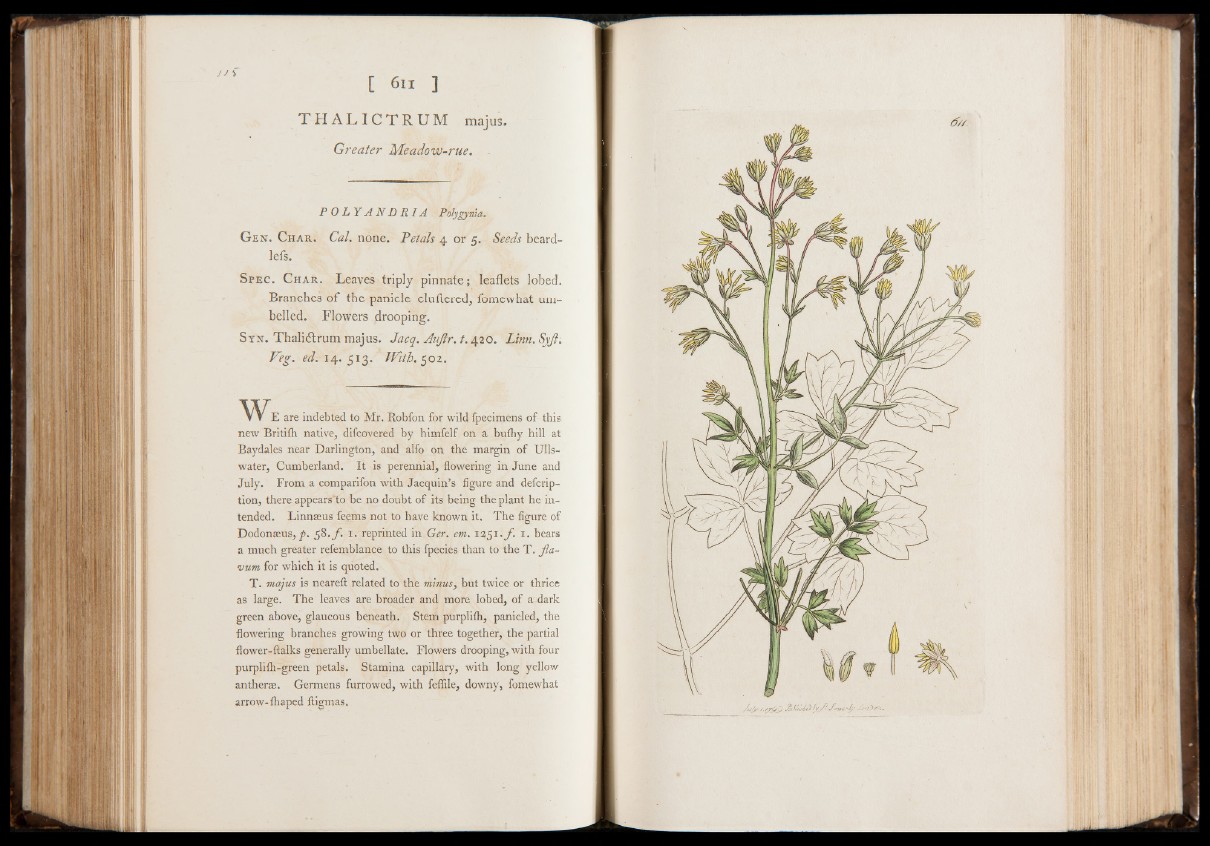
[ 6 i i ]
T H A L I C T R U M majus.
Greater Meadow-rue.
P O L Y A N D R IA Polygynia,
Gen. Char. Cal. none. Petals 4 or 5. Seeds beard-
lefs.
S p e c . C h a r . Leaves triply pinnate; leaflets lobed.
Branches of the panicle cluttered, fomewhat um-
belled. Flowers drooping.
S y n . Thalidtrum majus. Jacq. Aujlr. t. 420. Linn. Syjl:
Veg. ed. 14. 513. With. 502.
E are indebted to Mr. Robfon for wild fpecimens of this
new Britifh native, difcovered by himfelf on a bufhy hill at
Eaydales near Darlington, and alfo on the margin of Ulls-
water, Cumberland. It is perennial, flowering in June and
July. From a comparifon with Jacquin’s figure and defcrip-
tion, there appears‘to be no doubt of its being the plant he intended.
Linnaeus feems not to have known it. The figure of
Dodonaeus, f . 58.f . 1. reprinted in Ger. em. 1251 1. bears
a much greater refemblance to this fpecies than to the T. Jla-
vum for which it is quoted.
T. majus is neareft related to the minus, but twice or thrice
as large. The leaves are broader and more lobed, of a dark
green above, glaucous beneath. Stem purplifh, panicled, the
flowering branches growing two or three together, the partial
flower-ftalks generally umbellate. Flowers drooping, with four
purplifh-green petals. Stamina capillary, with long yellow
antherse. Germens furrowed, with feffile, downy, fomewhat
arrow-Ihaped ftigmas.